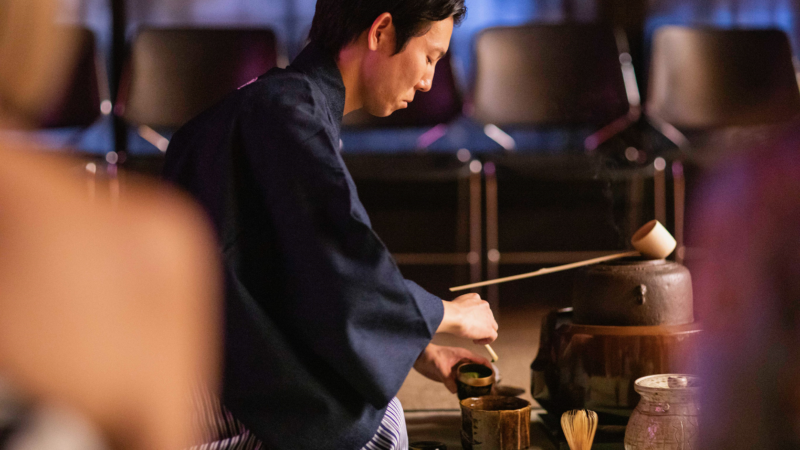
October 5, 2014 ◆ Charles Dunbar
My next lecture will be called “Yokai Nation:” From the Meiji period to today, Japanese monsters have fascinated audiences around the world with their unique critters, creepy stories, and elaborate artwork. This lecture explores the weird world of yokai from the 17th century to the modern world, and how yokai lore have changed with- and changed- Japan.
And here is the first article, on Kappa.

One of the most well known goblins in Japanese lore is the kappa. In a folk landscape where nothing is ever as it seems, and thousands of tricky creatures watch humans constantly, the kappa stands out at one of the more fanciful, and prevalent, of the folk monsters known as yokai.
Kappa are reputed to resemble turtles, though the similarities are few. Standing about the same size as a human child, the most versions of the kappa have long beaks, hard shells, webbed hands and feet, and a small dish or depression on top of their heads. Some are bipedal, while others use all their limbs to move about. Kappa tend to stay in or near the water, due to their slick, rubbery skin, but have the ability to leave it for a short time. And they have a powerful smell, usually likened to ammonia or other strong odors. It’s easy to tell when a kappa is around.
Aside from their foul odor and unique appearance, kappa are said to dwell in the waterways, rivers, and lakes of Japan. Living near the bottoms of these large bodies of water, they surface from time to time seeking food, or humans to play pranks on. But unlike the more playful folk creatures like the tanuki, the kappa has a mean streak that marks it more as predator than pet. These creatures are omnivores, eating many types of crop plants harvested by humans (cucumbers being a particular favorite), but will rarely shy away from the tender flesh of a child, or even a full grown adult, should the chance to devour one present itself.
Kappa are also one of the few yokai that are present all across Japan, showing a great deal of diversity in their forms and their habitats. Most, if not all, prefectures have their own version of the legend: from the crafty kawaero of Gifu, which can shapeshift into a monkey when out of the water; to the deep dwelling garappa of the southern Kyushu coast that possess longer and thinner limbs, and are supposedly able to poison or infect humans with disease when scared.
These two “kappa-forms” maintain the aquatic nature of the yokai, with slight variations in size of limbs and shells, indicative of keeping their homes in rivers and deep shoreline caves, respectively. But even away from the water, kappa-type creatures still prowl the night. These “cousin” kappa retain the diminutive size, love of harvest veggies, and cautious relationships with humanity that “traditional” kappa possess, but have adapted specially to different environments.
 The flood plains of Japan play host to the Hyosube, a squat, bald humanoid covered with coarse hair. By day, these yokai live within the surrounding rivers, emerging only after dusk to rampage through eggplant crops. Further up the mountains, one finds the Yamawara, a type of cyclops that spends its time at the high altitudes until winters falls, at which point they retreat back to the waters at the base of their mountain homes, to wait out the cold. Both the Hyosube and Yamawara have frequent dealings with humans: the former has the same ability to curse and infect as the garappa, while the latter has been known to serve mankind in exchange for baubles, food, or respect.
The flood plains of Japan play host to the Hyosube, a squat, bald humanoid covered with coarse hair. By day, these yokai live within the surrounding rivers, emerging only after dusk to rampage through eggplant crops. Further up the mountains, one finds the Yamawara, a type of cyclops that spends its time at the high altitudes until winters falls, at which point they retreat back to the waters at the base of their mountain homes, to wait out the cold. Both the Hyosube and Yamawara have frequent dealings with humans: the former has the same ability to curse and infect as the garappa, while the latter has been known to serve mankind in exchange for baubles, food, or respect.
Many of these “kappa forms” share traits with one another, despite different outward appearances, pointing to a possible “common ancestor” for all the different types. While such a creature hasn’t been identified by scholars (…yet), one potential candidate would have been the kawataro, or kawako, the famed “river child” found in Terajima Ryouan’s “Wakan Sansaizue” illustrated encyclopedia. Like the kappa, it’s head in concave, and capable of holding a handful of water. Like the Hyosube, it’s body is covered in coarse fur, and dwells in rivers by the day. Like all kappa-forms, it has prickly relations with humans, in this case stalking livestock to drag into the waters for exsanguination. And it is also fantastical, especially to audience of that age.
Whether or not this is yokai is related to the others might be up in the air, but the story was recorded down in 1713, just as yokai-fever was beginning to sweep Japan, and a general thirst for education was being satisfied by many tomes and manuals being published for eager audiences. A practice that continues to this very day.




